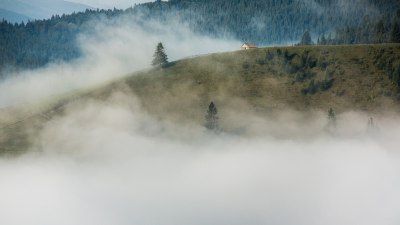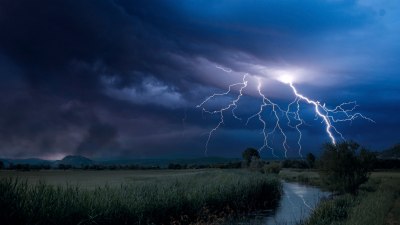Why Some Regions Get Afternoon Showers Like Clockwork
Explore the science behind predictable afternoon showers and why some regions experience them daily like clockwork.

Image created with Flux Schnell
In numerous parts of the world, residents and visitors alike have observed a fascinating weather pattern: afternoon showers that seem to arrive with remarkable regularity. This phenomenon, often described as "like clockwork," is not a mere coincidence but the result of a combination of atmospheric, geographical, and meteorological factors working in harmony. Understanding why some regions experience these predictable afternoon showers requires a deep dive into local climate systems, physical geography, and weather dynamics.
Understanding Afternoon Showers
Afternoon showers typically occur when solar heating during the day causes air near the surface to warm up, rise, cool, and condense into clouds that produce precipitation, often in the form of rain. This process is generally linked with convection: warm air currents rising from the heated ground, allowing moisture to condense as the air cools with altitude, forming clouds known as cumulonimbus or cumulus that eventually yield showers.
Not all regions experience these showers with equal frequency or timing. Some places witness them consistently in the afternoon hours, while in others, rain showers are more random or linked to other weather patterns. The timing and regularity of these showers are influenced by several key factors, including the amount of solar radiation, local humidity, terrain features such as mountains or bodies of water, and prevailing wind patterns.
The Role of Solar Heating
Solar radiation is the primary driver behind the daily heating cycle that leads to afternoon showers. During daylight hours, sunlight heats the Earth's surface unevenly due to variations in land cover, elevation, and moisture content. This warming causes the air closest to the surface to become warmer and less dense, prompting it to rise.
This rising warm air is called an updraft. As it ascends, the air cools at a rate known as the dry adiabatic lapse rate until it reaches its dew point temperature, at which water vapor begins to condense, forming clouds. Continued condensation releases latent heat, which fuels the further growth of clouds and can eventually lead to rain if conditions are right.
The predictable timing of afternoon showers is tied to the time it takes for the surface to heat sufficiently to initiate this convection cycle, often reaching maximum intensity in the mid-to-late afternoon after several hours of solar radiation.
Geographical Factors: Mountains and Landforms
Topography significantly affects the occurrence and timing of afternoon showers. Mountainous regions often experience predictable afternoon rain due to orographic lift—when moist air is forced to ascend the mountain slopes, it cools and condenses, forming clouds and precipitation.
For example, in many tropical and subtropical mountainous areas, such as the Andes or parts of Central America, warm moist air from nearby bodies of water travels inland and rises as it encounters high terrain. This consistent pattern results in daily afternoon rainfall, which locals often observe as a regular part of the climate.
Even in non-mountainous regions, varying terrain features can lead to temperature differences that encourage localized convection. Urban heat islands, open plains, and coastlines can all influence where and when afternoon showers develop.
Influence of Coastal Proximity and Sea Breezes
Coastal regions frequently see systematic afternoon showers as a product of sea breeze circulation. During the day, land warms more quickly than adjacent water, creating a pressure difference. Cooler, denser air from the ocean moves inland to replace the rising warm air over land, forming a sea breeze.
When the sea breeze advances, it can converge with the warmer air over land, forcing it upward and triggering cloud formation and precipitation. The timing of this process typically coincides with the afternoon when solar heating peaks. This regular pattern is common in places such as Florida, other parts of the southeastern United States, and coastal tropical zones worldwide.
The Importance of Moisture Availability
For afternoon showers to develop, there must be sufficient atmospheric moisture. Regions near large lakes, oceans, or with high humidity levels often see more predictable convective showers because abundant water vapor feeds cloud formation.
In tropical regions, moisture-laden air is almost always available, which, combined with intense solar heating and favorable terrain, results in daily afternoon rains. Conversely, arid or semi-arid regions typically lack this moisture and thus see few convective showers, regardless of solar heating.
Prevailing Wind Patterns and Atmospheric Stability
Prevailing winds influence how air masses move and interact. Winds that transport moist air inland can set the stage for convective precipitation. Additionally, the stability of the atmosphere determines whether rising warm air will continue to ascend or will be suppressed.
An unstable atmosphere favors the development of large, vertically developed clouds that produce showers and thunderstorms. Such instability often arises from significant surface heating combined with cooler air aloft, a layering that promotes vertical motion necessary for afternoon precipitation.
Examples of Regions With Regular Afternoon Showers
1. Tropical Highlands
In areas like Costa Rica's mountainous regions or Kenya's central highlands, afternoon showers are a reliable pattern. Warm, moist air is forced upslope daily, producing frequent rainfall in the afternoons. This regularity supports the rich biodiversity and agricultural productivity of these areas.
2. The American Southeast
The southeastern United States, including Florida and parts of Georgia and Alabama, are classic examples where sea breeze fronts generate near-daily afternoon showers during the summer months. The combination of abundant Gulf and Atlantic moisture, solar heating, and coastal geography creates a near daily pattern of convective rain.
3. Indian Subcontinent
During the pre-monsoon and monsoon seasons, parts of India, especially the Western Ghats and the northeastern regions, experience almost daily afternoon showers. Moist monsoon winds rise over mountain slopes, and solar heating intensifies convection, producing widespread rain showers typically in the mid-late afternoon.
Impact on Local Communities and Ecosystems
The reliability of afternoon showers shapes local lifestyles, agriculture, and ecosystems. Farmers often time planting and harvesting activities around these regular rains to optimize crop yields. The natural ecosystems rely on consistent moisture inputs, and disruptions in these patterns could have significant ecological consequences.
In urban areas, predictable showers enable planning around outdoor activities and water management infrastructure. However, sudden intense rainfall can cause flash flooding, so understanding the timing and intensity is critical for effective urban design and emergency preparedness.
Climate Change and Future Patterns
Climate change may alter the frequency, intensity, and timing of these afternoon showers. Changes in temperature, atmospheric moisture, and circulation patterns can disrupt traditional weather cycles. Monitoring and modeling these changes are essential for anticipating impacts on agriculture, water resources, and overall climate resilience.
Scientists use satellite data, ground observations, and climate models to study these convection-driven precipitation patterns and predict future shifts. While some regions may see increased rainfall, others might experience longer dry spells or more erratic weather, complicating local adaptation efforts.
Why Afternoon Showers Don’t Occur Everywhere
Several regions do not experience consistent afternoon showers due to insufficient moisture, lack of favorable topography, or atmospheric stability that suppresses convection. For instance, deserts see minimal convective rainfall because the air is too dry and often too stable in the afternoon.
Similarly, polar regions have limited solar heating, which reduces surface warming and vertical air movement. Additionally, large-scale weather systems, such as cyclones or frontal boundaries, might dominate precipitation patterns rather than daily solar-driven convection.
The Science Behind Regularity
The near-clockwork regularity of afternoon showers in some regions is a result of the interplay between Earth's rotation, consistent diurnal solar heating cycles, and local atmospheric conditions. Since the sun rises and sets at set intervals, the heating patterns that drive convection repeat daily. This leads to a formation of clouds and precipitation at roughly the same time each day when conditions are right.
The maintenance of this pattern hinges on stable geographic and climatic factors. As long as moisture levels remain adequate, topography remains unchanged, and solar heating follows its usual cycle, afternoon showers continue their regular, predictable occurrence.
Scientific Research and Observation Techniques
Meteorologists and climate scientists use various tools to study and predict these regular afternoon showers. Ground-based weather stations measure temperature, humidity, and precipitation, while radar systems track the development and movement of showers and thunderstorms in real time.
Satellite observations provide a broader view, monitoring cloud cover, moisture transport, and surface temperature. Numerical weather prediction models incorporate this data to simulate convective processes and enhance forecasting accuracy.
Over time, long-term data collection has revealed patterns and trends that deepened the understanding of afternoon shower mechanisms and their spatial variability.
The Predictability of Nature
The phenomenon of afternoon showers arriving like clockwork is a powerful reminder of how natural systems operate within predictable parameters driven by physics and geography. Recognizing the forces behind these weather patterns enriches our appreciation for Earth's complexity and the elegance of atmospheric science.
Whether nurturing rainforests or impacting daily human activities, these predictable afternoon showers illustrate the intricate balance of elements that shape our environment. As research continues, our understanding deepens, allowing societies to better adapt and coexist with these remarkably consistent natural rhythms.











